Sushi Rice is a unique blend of Japanese rice, vinegar, and sugar that creates the perfect texture and flavor to complement all your favorite sushi rolls. Even without a rice cooker, you can make perfect Sushi Rice with just a pot and a stovetop!
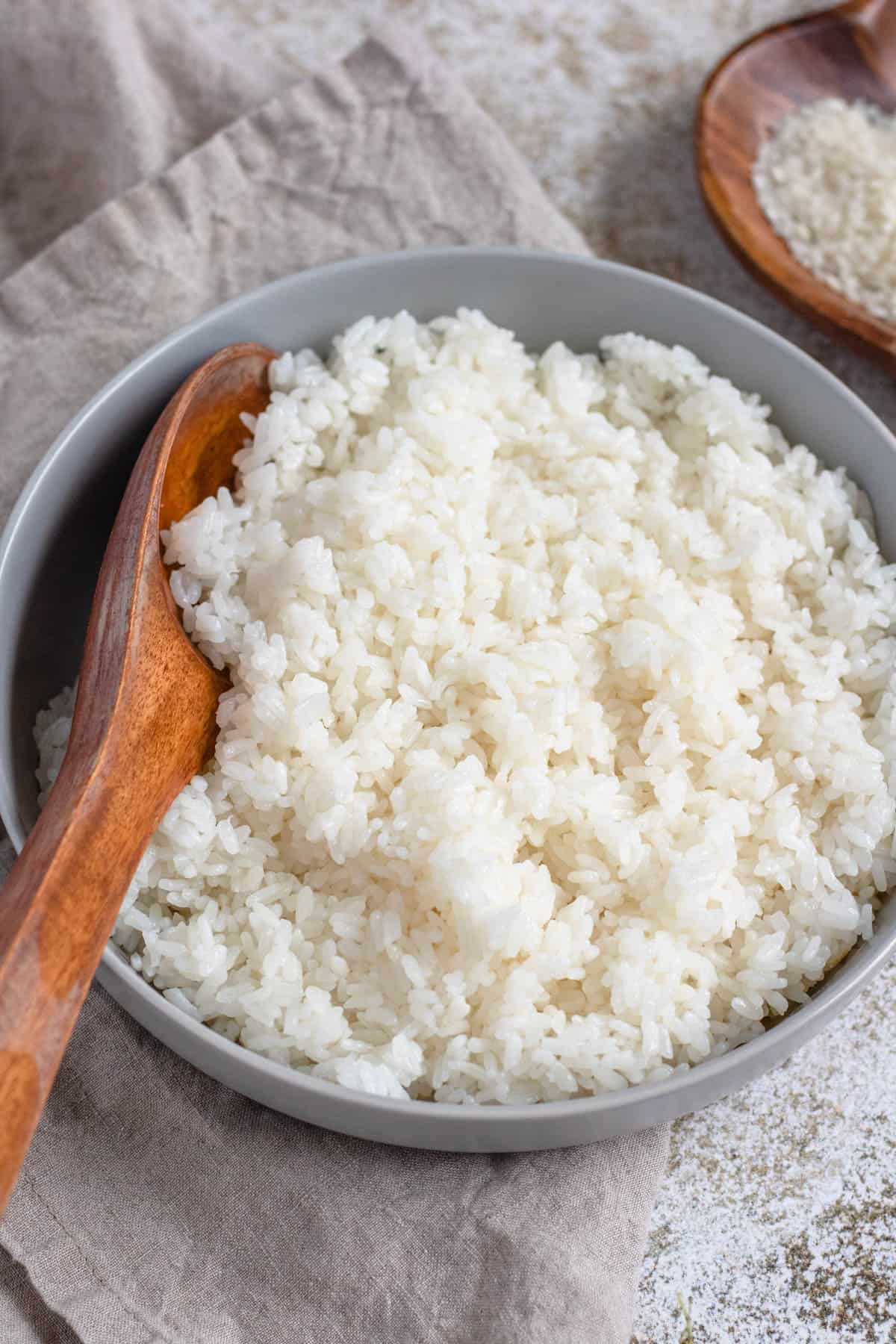
Hello Reader! I try my hardest to research recipes as best as I can before posting to ensure I am representing each culture correctly. If this recipe is from your country and I have made a mistake or you have suggestions for how to make it more authentic, I would love to hear! Please leave a comment below letting me know what should be different, and I will rework the recipe. It is always my intention to pay homage and respect to each cultural dish that I cook. Thanks for reading!
Sushi is not difficult to make at home, but without the right ingredients, you may not get the results that you were hoping for. One of the key ingredients to any excellent sushi is good sushi rice.
Not just any old regular rice will work for sushi. It needs to have the right sticky texture to keep the roll together. The best sushi rice also adds a slightly sour, vinegar flavor that perfectly compliments the other ingredients.
Japanese sushi rice is short-grain or medium-grain rice that, when cooked, comes out chewy, sticky, and fluffy. You can enjoy delicious sushi rice on its own as a side, but the addition of rice vinegar, sugar, and salt contributes to the overall flavor of your favorite sushi roll.
While you need to use a specific type of rice for sushi, you do not need any fancy equipment for cooking sushi rice–not even a rice cooker. All you need for this recipe is a small pot and a hot stovetop.
If you are experimenting with making homemade sushi like California rolls or this Rainbow Roll Sushi Recipe and want just the right rice, give this sushi rice recipe a try.
Why Make This Recipe
- Perfect Homemade Sushi: Using sushi rice is important for both flavor and texture. To put together the best homemade sushi that tastes like something you would order at sushi restaurants, you need to start with the right rice.
- Authentic Flavor: Sushi is a Japanese culinary staple that has gained popularity around the world. If you want to make the most authentic sushi in your own home, you’ve got to make your rice like the pros!
- Cheaper: Making homemade sushi at home (especially for a party) is certainly cheaper than loading up at a sushi restaurant! But in order to do that, you need homemade sushi rice. This recipe will teach you exactly how to do it!
Recipe Origins
Rice has been a critical part of sushi since its inception, but not in the way you might think.
Sushi actually came from China thousands of years ago. Then, narezushi consisted of heavily salted fish wrapped in fermented rice to keep it from going bad. Though the dish included rice, the rice was usually thrown away when the fish was eaten.
When the Japanese began eating sushi, they made their own changes including boiling their rice and using rice vinegar to ferment the rice and protect the fish from bacteria. A chef named Hanaya Yohei is credited with pairing boiled rice and rice vinegar with a bite-sized piece of fish to create sushi as we know it today.
What Do I Need To Make This Recipe
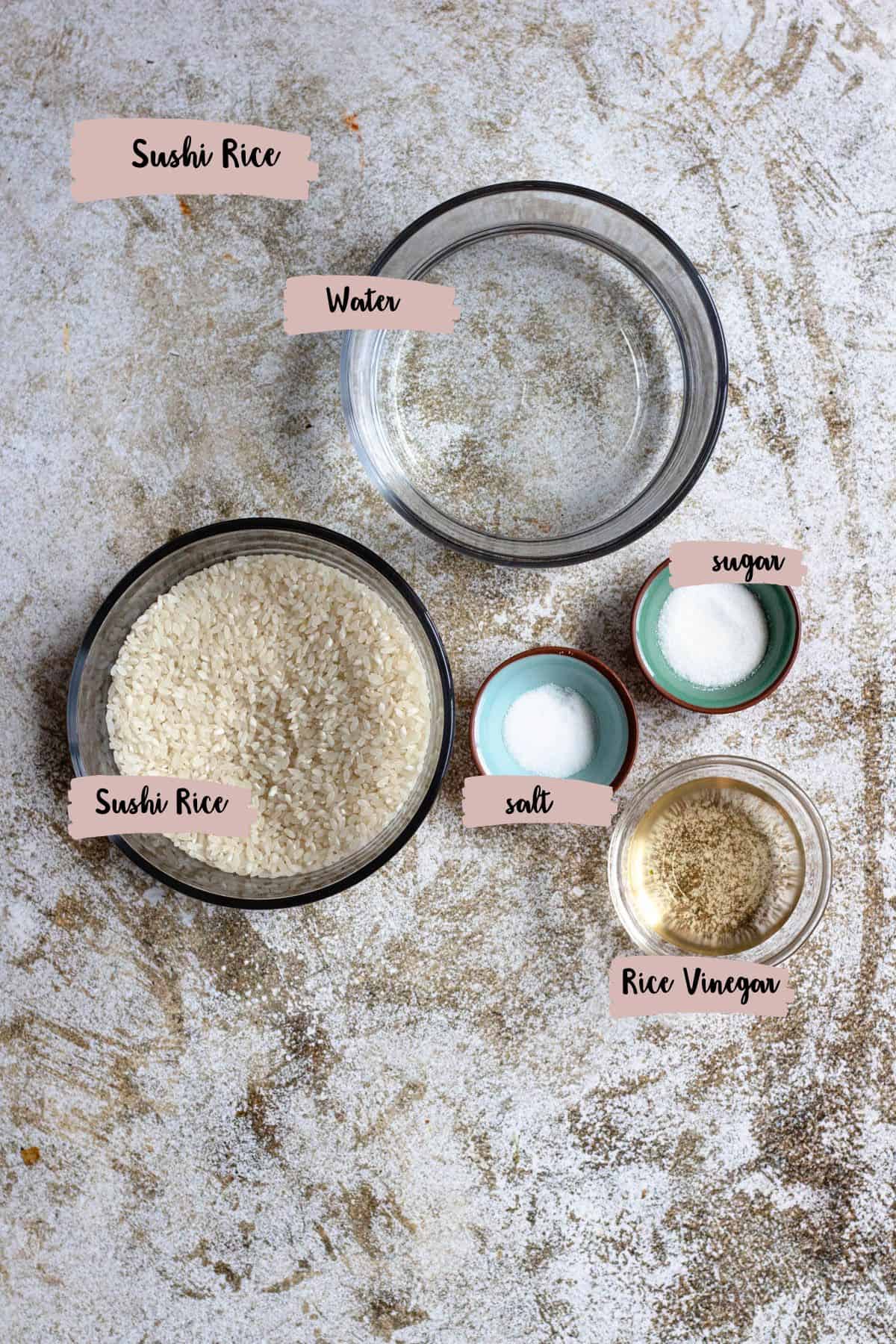
Here is a visual overview of the ingredients in the recipe. Scroll down to the recipe at the bottom for quantities.
- Sushi Rice (Japanese short-grain rice): You can find sushi rice alongside other rice or in the Asian section of your local grocery store. You can also find it online. In a pinch, you could use Calrose rice. Do not use Jasmine rice or basmati rice.
- Water: Make sure to pay attention to the water ratios in the recipe! This is very important to get the perfect rice.
- Rice Vinegar: Rice vinegar is not the same as sushi vinegar. Bottled sushi vinegar is rice vinegar with sugar and salt added, but mixing up your own allows you to control exactly what is in it. If you do not have rice vinegar but you have sushi vinegar, omit the boiling of the liquid step altogether and just use the sushi vinegar you have.
- Granulated Sugar: Simply granulated sugar is all you need to balance the flavor of the vinegar. You could try substituting another sweetener if you like.
- Salt
Tools
- Colander
- Pot or small saucepan with a lid
How to Make This Recipe
Step One: Rinse Your Rice

Place your rice in a colander and rinse in cold water for about 3 minutes to remove any excess starch. After 3 minutes, put the rice in a bowl and fill the bowl with water, using your hand to swish the rice around. Let sit for 2 minutes. Drain the rice back into a colander and rinse again for 1-2 minutes until the water runs clear.
Step Two: Boil The Rice
Place your rice in a pot along with 1½ cups of water. Turn your stove to high heat and bring the water to a boil.
Once the water is boiling, reduce the heat to low and cover. Cook, covered, for about 20 minutes.
When the time is up, keep the rice covered but remove it from the heat. Allow it to stand for about 10 minutes before proceeding.
Step Three: Add The Vinegar and Sugar
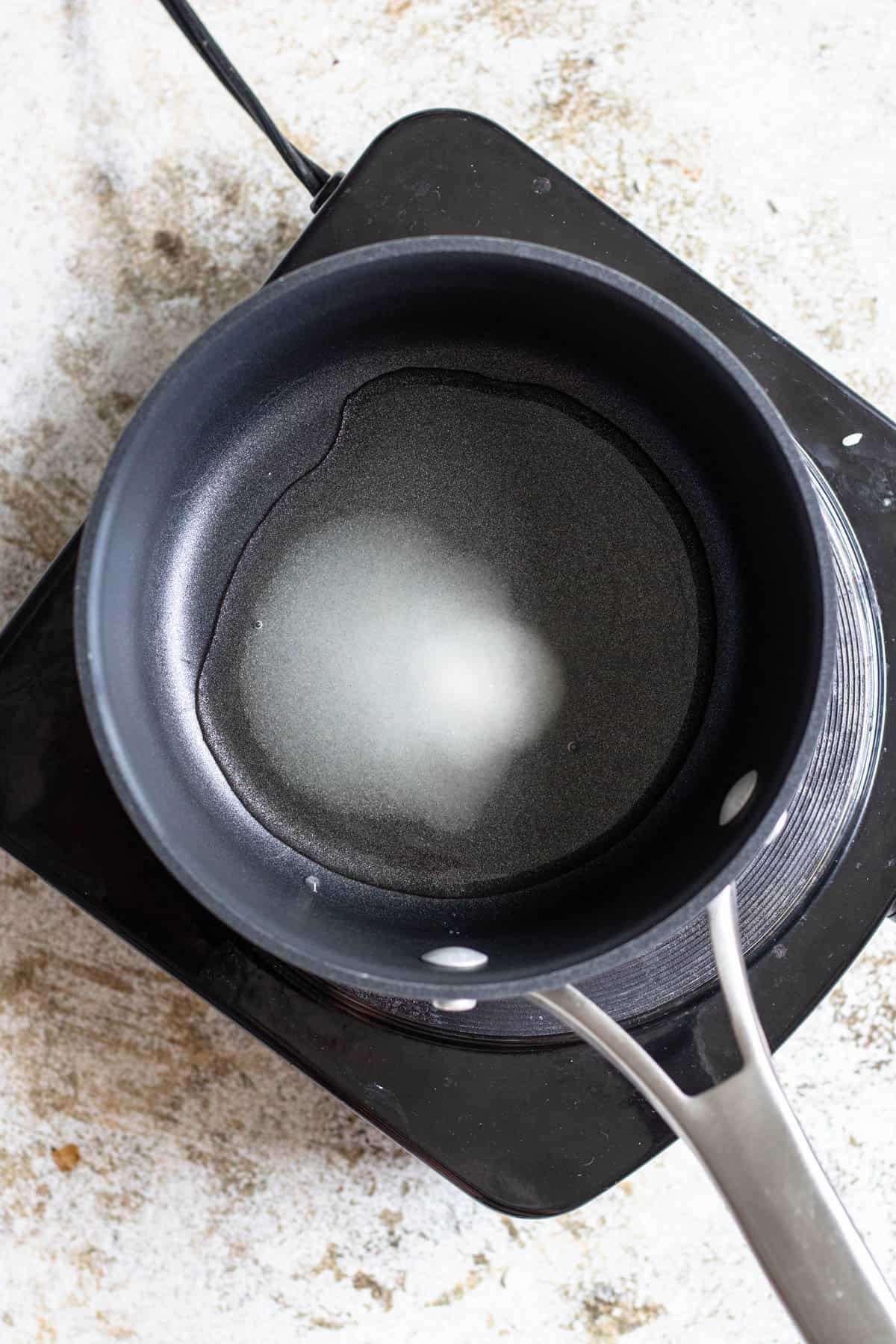
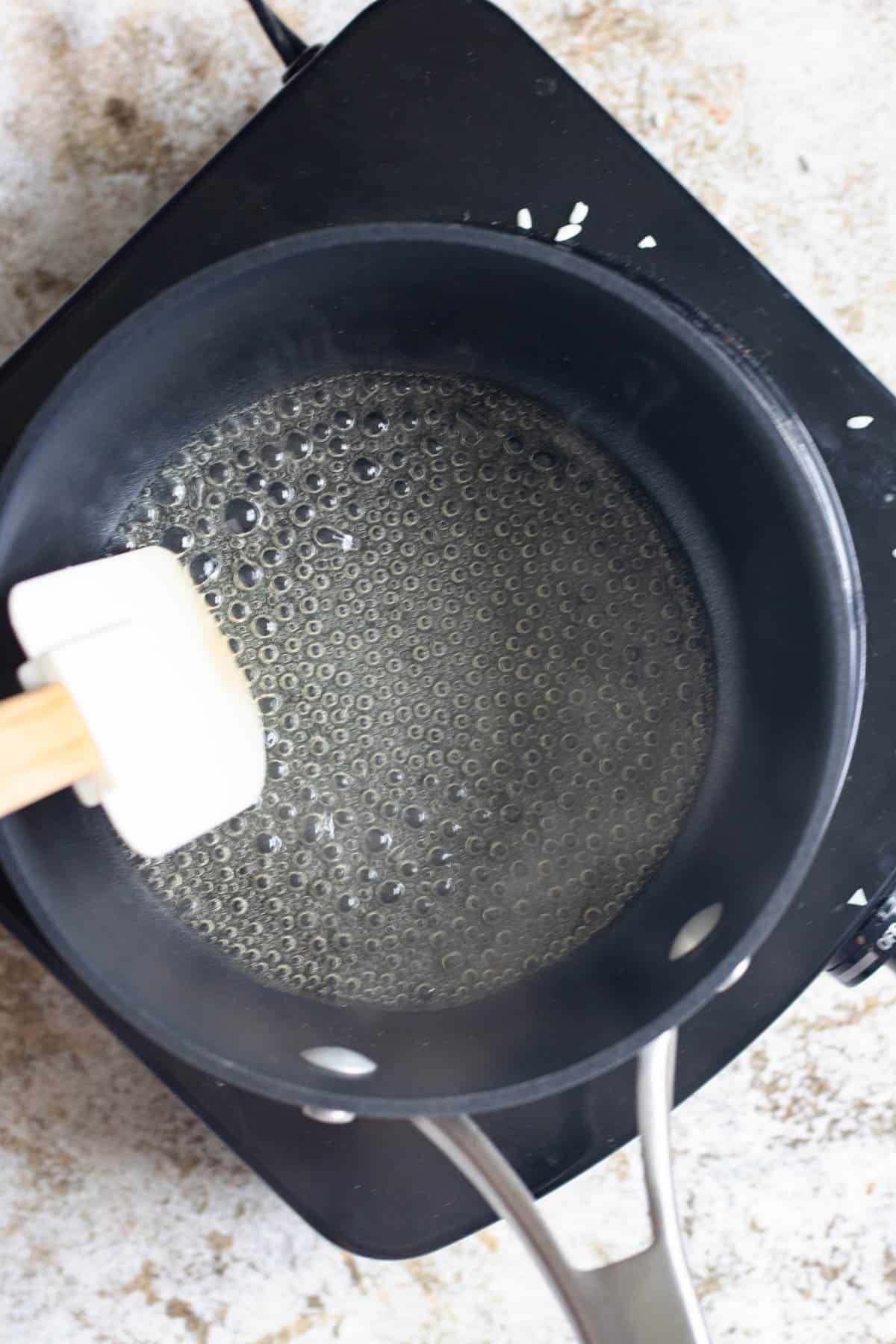
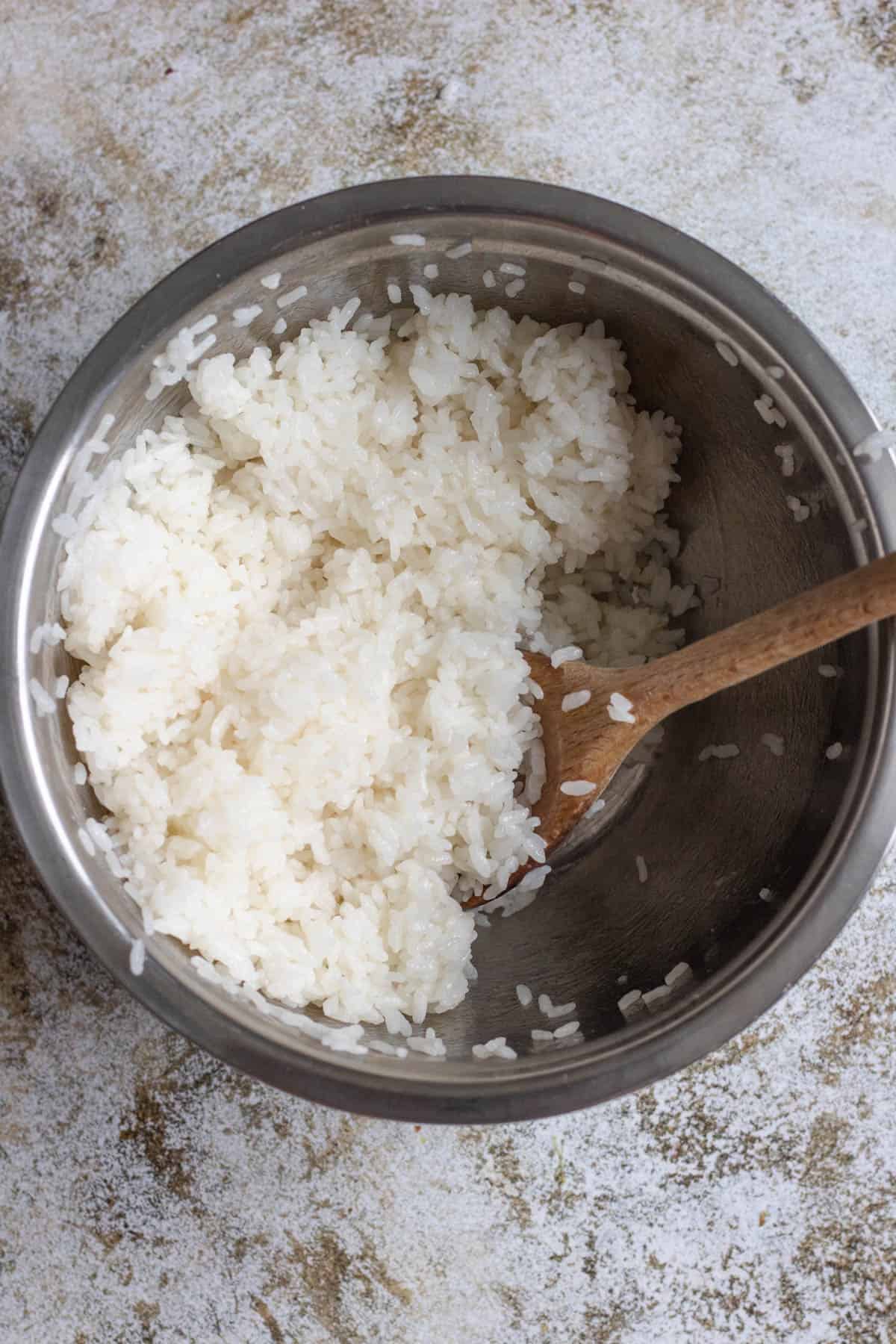
In the meantime, put the rice vinegar, granulated sugar, and salt in a small pot and bring to a simmer. Once it begins to simmer, remove it from the heat.
Transfer the rice to a large bowl and pour the vinegar mixture over it. Use a spoon to gently mix the vinegar mixture into the rice.
Use sushi rice to make your favorite sushi rolls like gobo sushi, rainbow rolls, or dragon rolls. Enjoy!
Expert Tips
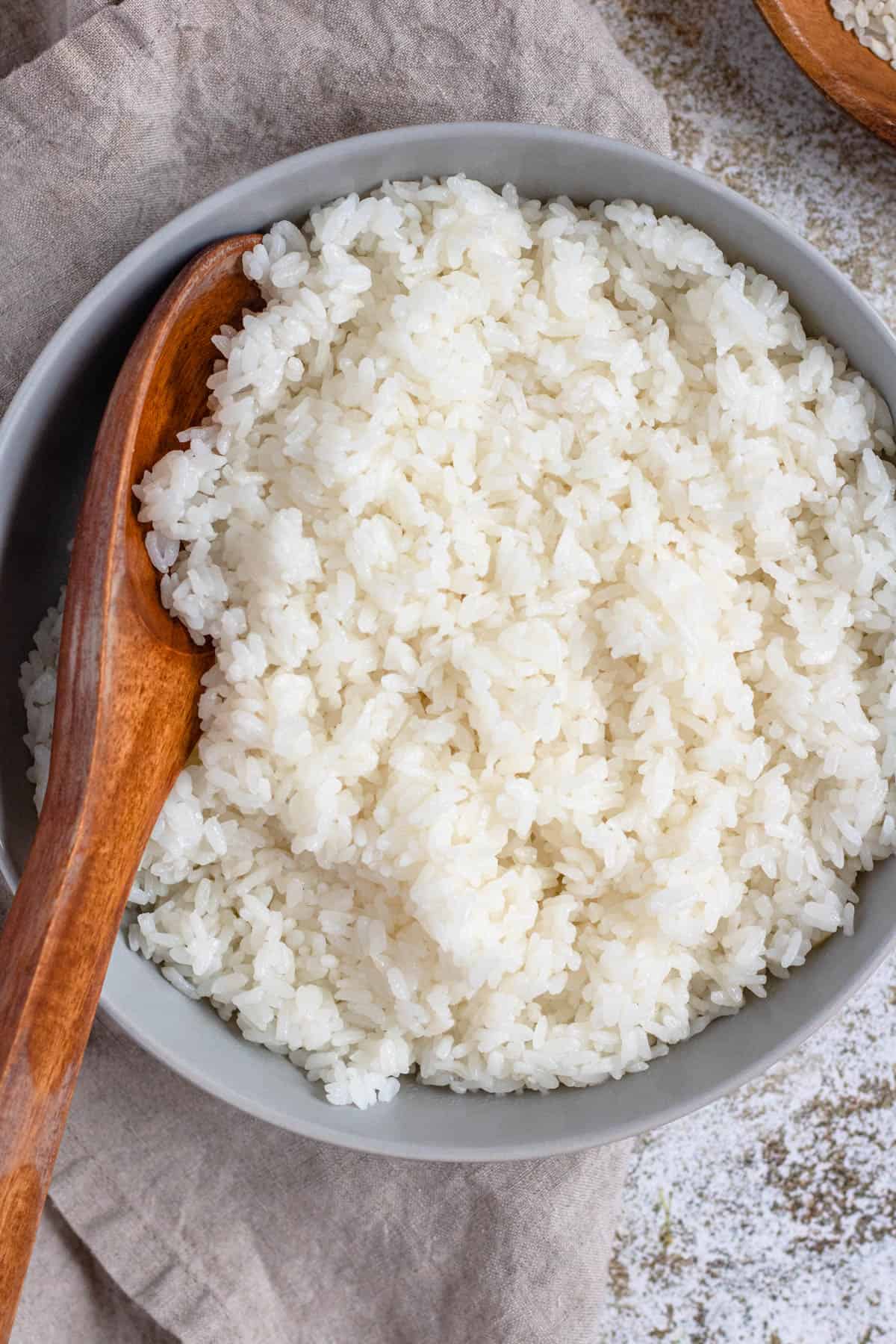
- Try not to stir or handle the rice too much while it is hot. When it is hot it is more likely to break down, and you do not want your rice to end up mushy. It is important to fold in the vinegar and sugar gently, using a wooden spoon or rice paddle if you have one. You want to be able to see each grain of rice. Allow it to cool completely to room temperature before you try to use it for sushi.
- Rinsing the rice will help remove some of the starch. Sushi rice has a high starch content. You do want your rice to be sticky rice but not starchy.
- Some chefs like to add extra flavor to their sushi rice by including a sheet of seaweed into the water while the rice boils. This is completely optional.
- All your liquid should be absorbed by the rice during cooking. If you still have liquid in the pot after cooking, try letting it sit for a few extra minutes and adjusting your water ratio the next time you try to make it.
FAQs
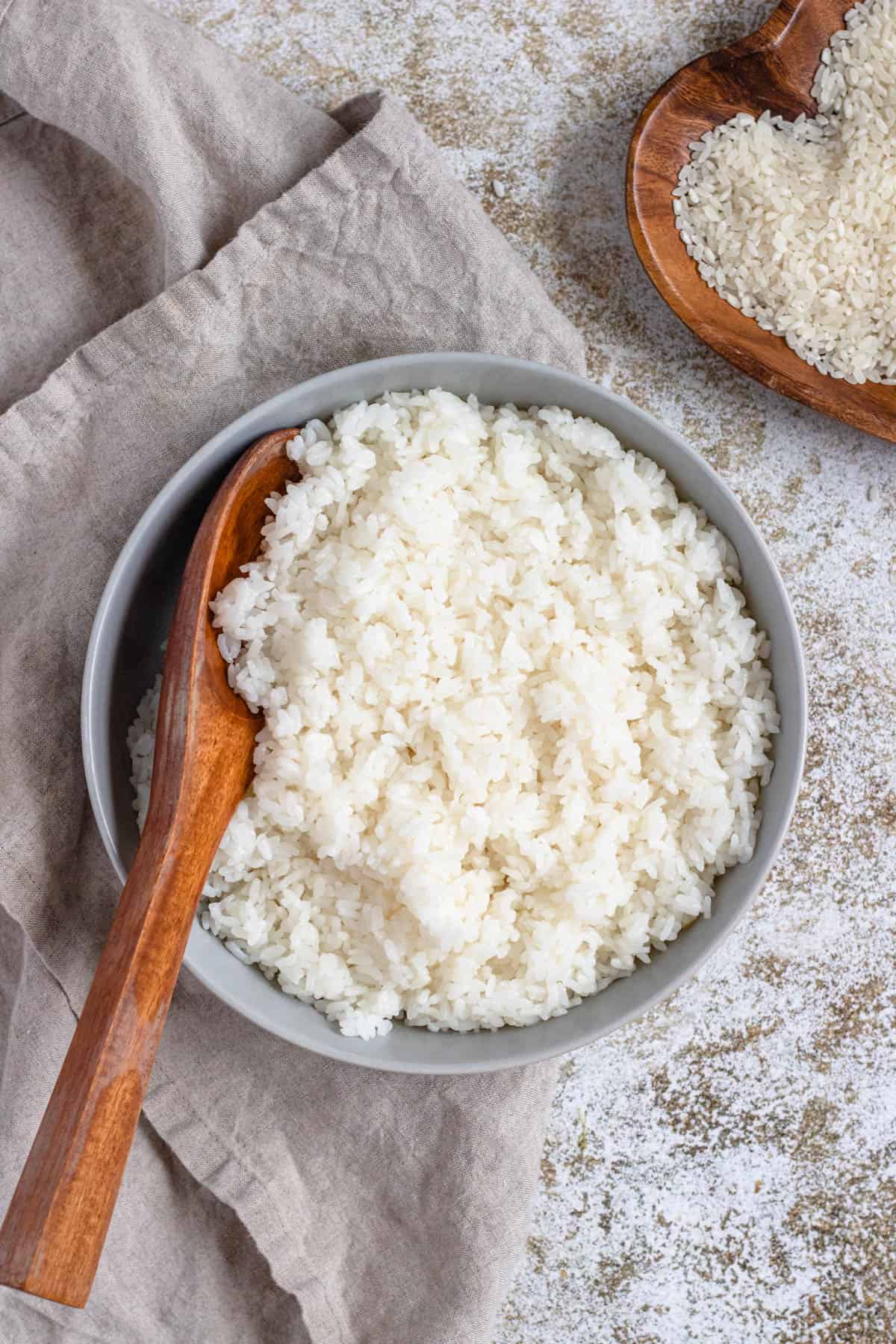
It is not a good idea to use brown rice, Jasmine rice, or any long-grain rice for sushi.
Brown rice is too heavy and will soak up excess moisture, making it mushy. Long-grain rice may not stick and roll as well as sushi rice.
It is also not a good idea to use arborio rice, which is used for risotto. Arborio has a higher starch content than sushi rice.
This recipe teaches you specifically how to make sushi without a rice cooker. But it is definitely possible to use a rice cooker for sushi rice if you have one. The easiest way is to simply cook the rice as normal and add the vinegar and sugar mixture to the cooked rice when it is done.
Sushi rice is perfect for homemade sushi (like this Gobo Sushi!) but you can also use it as a side for any Japanese meal. It goes great in poke bowls, rice bowls, rice balls, or alongside some Japanese curry. Serve it with this Kani Salad for a delicious lunch!
There is some debate about whether or not you need to let the rice soak. Some chefs swear sushi rice should soak for up to thirty minutes before cooking. This may help the rice begin to slowly absorb some water and cook more evenly. This additional step is optional but may be worth a try if you feel like your rice did not cook evenly.
Did you enjoy learning How to Make Sushi Rice without a Rice Cooker? If so, make sure you check out these other recipes I picked out just for you:
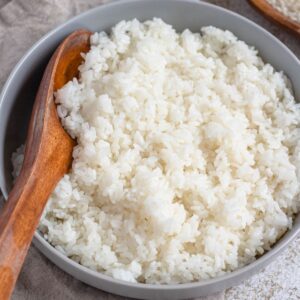
How To Make Sushi Rice without a Rice Cooker
Equipment
- Strainer/Colander
- Pot(s)
- Mixing Bowl(s)
Ingredients
- 1 ¼ cup Sushi Rice, Japanese short grain rice
- 1 ½ cups water
- 3 tbsp rice vinegar
- 2 tbsp granulated sugar
- 1 tsp salt
Instructions
- Place 1 ¼ cups rice in a colander and rinse for about 3 minutes. After 3 minutes, put the rice in a bowl and fill the bowl with water, using your hand to swish the rice around. Let sit for 2 minutes. Drain the rice back into a colander and rinse again for 1-2 minutes until the water runs clear.
- Place your rice in a pot along with 1½ cups of water. Turn the heat to high and bring the water to a boil.
- Once the water is boiling, reduce the heat to low and cover. Cook, covered, for about 20 minutes.
- When the time is up, keep the rice covered but remove it from the heat. Allow it to stand for about 10 minutes before proceeding.
- In the meantime, put the 3 tbsp rice vinegar, 2 tbsp granulated sugar, and 1 tsp salt in a small pot and bring to a simmer. Once it begins to simmer, remove it from the heat.
- Transfer the rice to a large bowl and pour the vinegar mixture over it. Use a spoon to gently mix the vinegar mixture into the rice.
- Use the sushi rice to make your favorite sushi rolls like gobo sushi, rainbow rolls, or dragon rolls. Enjoy!
Notes
- Sushi Rice (Japanese short-grain rice): You can find sushi rice alongside other rice or in the Asian section of your local grocery store. You can also find it online. In a pinch, you could use Calrose rice. Do not use Jasmine rice or basmati rice.
- Water: Make sure to pay attention to the water ratios in the recipe! This is very important to get the perfect rice.
- Rice Vinegar: Rice vinegar is not the same as sushi vinegar. Bottled sushi vinegar is rice vinegar with sugar and salt added, but mixing up your own allows you to control exactly what is in it. If you do not have rice vinegar but you have sushi vinegar, omit the boiling of the liquid step altogether and just use the sushi vinegar you have.
- Granulated Sugar: Simply granulated sugar is all you need to balance the flavor of the vinegar. You could try substituting another sweetener if you like.
Salt - Try not to stir or handle the rice too much while it is hot. When it is hot it is more likely to break down, and you do not want your rice to end up mushy. It is important to fold in the vinegar and sugar gently, using a wooden spoon or rice paddle if you have one. You want to be able to see each grain of rice. Allow it to cool completely to room temperature before you try to use it for sushi.
- Rinsing the rice will help remove some of the starch. Sushi rice has a high starch content. You do want your rice to be sticky rice but not starchy.
- Some chefs like to add extra flavor to their sushi rice by including a sheet of seaweed in the water while the rice boils. This is completely optional.
- All your liquid should be absorbed by the rice during cooking. If you still have liquid in the pot after cooking, try letting it sit for a few extra minutes and adjusting your water ratio the next time you try to make it.




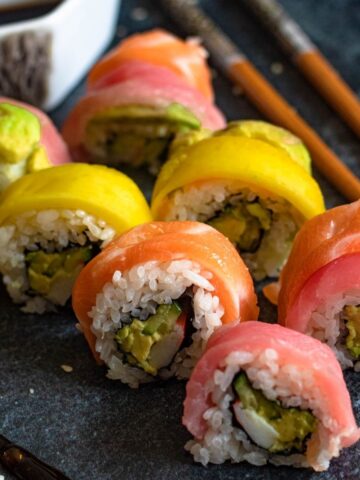
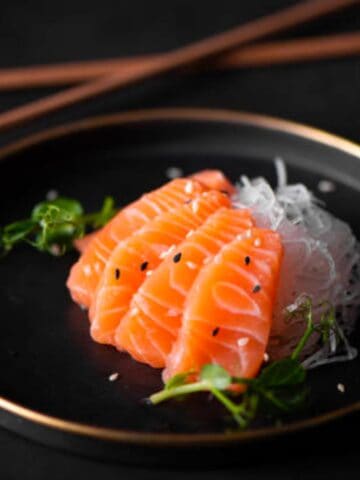
Leave a Reply